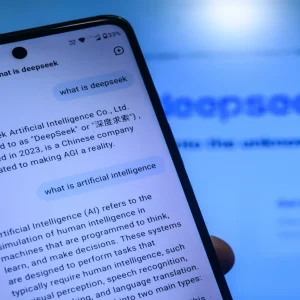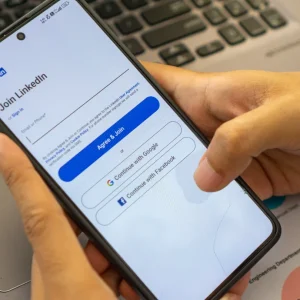
A famed tennis instructor enjoyed telling those at his academy that no matter how many lessons they took and how much time they spent on the court practicing, the game finally came down to this: If your opponent returns your shot and the ball gets over the net, he’s going to win. Plain and simple.
Tennis can be a lot like the competitive world of business, especially when you’re on the technology side of things as I am. My clients naturally want to get started on their digital journey as fast as possible, because frankly, this journey involves wading through uncharted territory and often takes them out of their comfort zone and forces them to measure up against competition. Indeed, I am often in a situation where many of my clients demand massive cost savings or significant revenue uplifts (or both!) in short timeframes. I have grown accustomed to hearing comments like: “We need to be agile,” “Our technology has to be transformative,” “Bimodal is key,” and “We need to bring in the A team,” you get the drift?
But transformative digital journeys are hardly ever quick or comfortable. They are designed to strengthen an enterprise and enable it to transition to a new way of doing business. Yet at the end of the day, despite all the effort, if your competitor can out-maneuver your organization in the marketplace, they will win, very much like tennis.
In fact, now that we have completed a year of successful partnership with the Association of Tennis Professionals (ATP), I’ve come to realize that any digital journey must have a component that simplifies, clarifies, and cuts to the chase. After all, all your opponent has to do is get the ball over the net. If your organization can’t handle that simple scenario translated into a business one, you’re going about things the wrong way.
At Infosys, we have developed a four-step approach not only for the game of tennis but for any enterprise client looking to supercharge their organization. It’s simple to explain and understand, especially when you have tennis as a unifying theme.
Sensing and Gathering Data
At the match, the chair umpire sits atop his throne and keeps score. Sometimes he will even overrule a call, much to the disappointment of the player who thought the ball was inbound. But what about modern tennis fans? What do they want to know beyond the official score?
Thanks to our partnership with ATP, we went after what the fans want from the match, what sponsors want from the tournament, what coaches want for their players, and even what commentators and other stakeholders are looking for. Was there data to be sensed and gathered from all of these members of the tennis ecosystem?
If this can be applied to organizations, you could ask yourself, are you sensing and gathering data on all stakeholders who are involved with you and your ecosystem? As we’ve done with the ATP, make sure you’re gathering data from scoreboards to sensors. We are living in an era where digging for data is like digging for the new oil, not just the obvious ones like customer data, product data or order data. Dig around each stakeholder in the ecosystem, like in the case of ATP, we dug around sponsor engagement data, player data, coach data, commentator data, tournament data, media engagement data, data-driven stories, fan propensity data, ‘fan click’ data, and more.

Analyzing What We Gather
Machine learning-based algorithms can predict with an amazing level of accuracy what a player will do, and are creating a new paradigm for understanding the strategy being executed in a game. Perhaps it’s the propensity of players to withstand ‘under pressure’ situations, or figure out where to serve in a 0-40 three break point situation. Machine learning now has the potential to identify which particular point cost the player the game and, more interestingly, which shot gave away that point.
Apparently, it was not the last shot that lost the point. Some of the leading organizations have already been leveraging machine learning algorithms for driving significant benefits – from Google’s search recommendations, to Facebook’s face recognition. Tasks like aircraft landing gear maintenance and predictive working capital optimization are also harnessing machine learning-based algorithms.
Engaging with Stakeholders
Fans of the ATP have taught me that in business as in tennis, it’s very important that we look at the same data from many different delivery channels. That way, you will locate data that could potentially bring in the highest level of engagement with your stakeholders. Our real-time analytics helps tennis fans decipher strategy, what strengths and weaknesses are being played out right in front of them, and patterns of why and when a player is hitting serves in excess of 130 miles per hour. That’s well and good, but how can we enable fans to enjoy the game in new ways?
I think it would be cool if we were able to introduce augmented reality to the action. I say watch the entire match through a VR headset, backed up by a mind-boggling ‘highlights’ package. How about asking ‘Amazon Alexa’ to tell you who has the best serve in 2016? or who performs best under pressure against the Top 10 players? And thus continue an interesting conversation with Alexa while relaxing on your large comfortable sofa.
Maybe, coaches and players need extreme details and videos to extract insights. Sponsors need to quantitatively access the impact of their brand across the tournament for every engagement they had with fans and players, all the way to their clients. Perhaps commentators want social media analysis which they could discuss with fans. The possibilities of how data can be used to engage with different stakeholder are immense.

Monetization
As players challenge each other for perfection and glory, tour, tournament and event organizers, sponsors and broadcasters are challenged by the need to ensure RoI. When we can sense, analyse and engage with each stakeholder in the tennis ecosystem, monetization will follow as a natural progression. Without creating this super stickiness with stakeholders, rushing to sell merchandise or constantly bombarding them with ads on mobile apps is a sure way to generate aversion.
Once again, a monetization strategy must first have products for each stakeholder. These products can be developed after you have dug around for data that will attract each stakeholder. We also need to make it super easy for each stakeholder to consume this information for free and charge only for premium content.
I recommend sending value-adding ads from sponsors in real-time. These would be based on targeted insights. These ads and offers should not be available to all and sundry. How about we create an ecosystem of sponsors and cross-pollinate ads across their consumer ecosystems? With predictive analytics and digital tools, it’s rather clear what the monetization potential of a particular product is and what’s its engagement success is likely to be. By the way, I’m still talking about a tennis match here. Now imagine what a retailer could do in a Big Box store with the same tools. Tennis, everyone?






